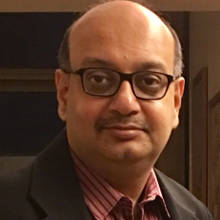[Image from Unsplash]
Now that the ODI World Cup is over, instead of bemoaning the loss in the finals, the focus must quickly shift to the crucial decisions that Ajit Agarkar and his team of Indian selectors must consider. Should they retain the services of Rohit Sharma as captain across all three formats of the game? Do they give Rahul Dravid a longer run or opt instead for VVS Laxman, Ashish Nehra or even a foreign coach? And finally, and perhaps most crucially, should they look to entirely rebuild the nucleus of the side that took them to the finals of the ODI World Cup and World Test Championship?
These aren’t easy decisions for the selectors to make. Should they continue to give a longer rein to old warhorses like Rohit Sharma, Virat Kohli and Mohd Shami or keep an eye on the future and bring a much younger cohort of talent to the forefront?
Former cricketer and coach Nehra has spoken about the need for continuity, advocating that Sharma should be retained as captain for the upcoming T-20 World Cup to be played in the Americas in June ‘24. His logic is that age shouldn’t be seen as a limiting factor. And that young blood should be made to compete with the likes of Sharma and Kohli on equal terms for a place in the team.
Sharma and Kohli are 36 and 35 years old respectively, and there is no arguing that they are both fit enough to play at the highest level for a few more years. The moot point: Is there an opportunity cost to pay for if their tenures on the national side get extended? Will it reduce the chances for younger talent waiting in the wings to show their skills at the highest level?
It isn’t just cricket. India has struggled with managing these generational transitions, be it in politics or even business. Our incumbent leaders rarely let go. They want to bask in the glory for as long as they can. The power distance between the incumbent and the rest continues to grow—and the succession challenge almost starts to seem insurmountable after a while.
If initial reports are to be believed, Sharma may prove to be an aberration in this regard. He earned kudos for his selfless, fearless batting to power the Indian team to an amazing winning streak of 10 consecutive wins in the recently concluded World Cup. He has apparently had conversations with Agarkar, the chief of the selectors, that he will not play T-20 in an attempt to manage his own workload and instead conserve his energies for ODIs and Test cricket.
The decision to bring back Hardik Pandya to the Mumbai Indians team could also be a precursor for Sharma to hand over the reins to Pandya. Let’s wait and see how this pans out.
It isn’t clear if Kohli plans to do anything similar. But I believe nothing can be better for the future of Indian cricket, if a new breed of cricketers get an opportunity to step up, especially for the T-20 version of the game. It is a young man’s game, needs better reflexes, improvisation and adaptability that invariably favours the young over the old. India now boasts a formidable bench strength of the kind that it has perhaps never had in the past.
The temperament and the skills with which younger players around the world like Rinku Singh, Yashasvi Jaiswal, Rachin Ravindran and Harry Brook are starting to express themselves suggest they are more than ready for the big stage. Delaying the inevitable serves no one’s interests, least of all the talent at the prime of their youth.
Also, the way the game of cricket is developing, not every player, save a few, is geared to play across all formats. While it is true that the T-20 game has had a significant run-off on Test cricket, at its core, they are like chalk and cheese. Having different teams for each format, including separate coaching staff, is worth thinking about.
Besides, cricket is now being played almost all year-round. There is a higher prospect of injury, fatigue and general wear and tear. During Dravid’s term as coach, India learnt how to manage workload and rotate its talent effectively. It needs to evolve a better method of team selection, based on a horses-for-courses formula.
But the bigger issue is about continuing to craft a distinctive game for each format. One of the biggest takeaways from the World Cup was the quiet confidence with which the entire Indian team played, irrespective of the unexpected loss in the finals. It was a unique brand of cricket that attracted attention from rivals and brought joy to millions of fans. Rohit Sharma led from the front and every player stood up to the challenge. For once, the camaraderie on the field was excellent, players looked visibly happy inside the dressing room, and there was no chatter about internal dissensions. This was despite the team’s controversial decision to bench Ravichandran Ashwin, who is still seen as one of the innovative spin bowlers and best minds in the game.
Indian cricket may have an embarrassment of riches. However, it can only be as good as what the powers-that-be at BCCI allow it to do to take the game to the next level and earn the respect of fans around the world. After all, it is easy to succumb to jingoism, and for the BCCI to be seen as a big bully.
The world needs Indian cricket to demonstrate leadership and not appear overly aggressive and partisan. We need to make sensible choices that are in the long-term interest of Indian cricket—and the game itself.
(This column was first published in Business Standard)

